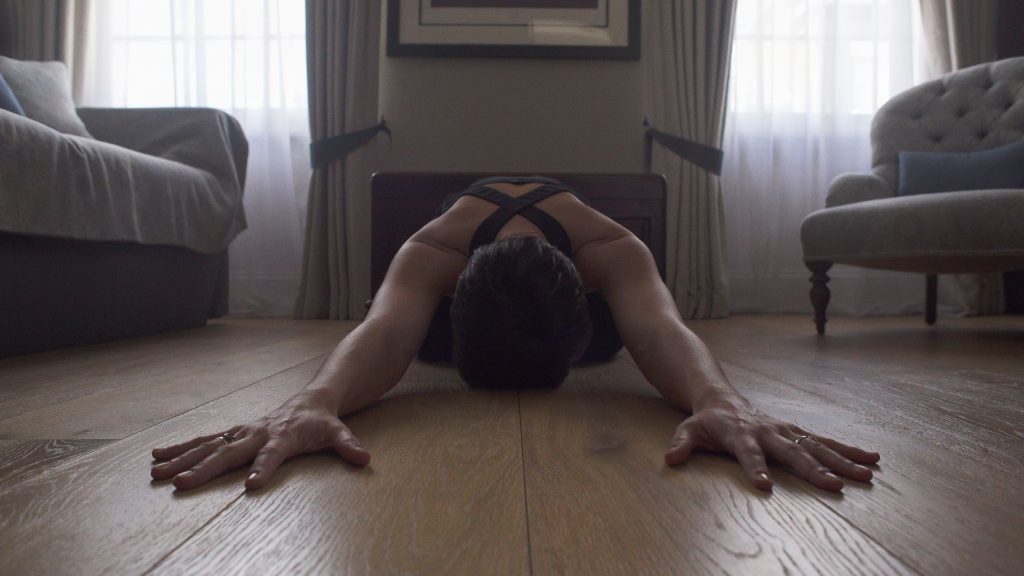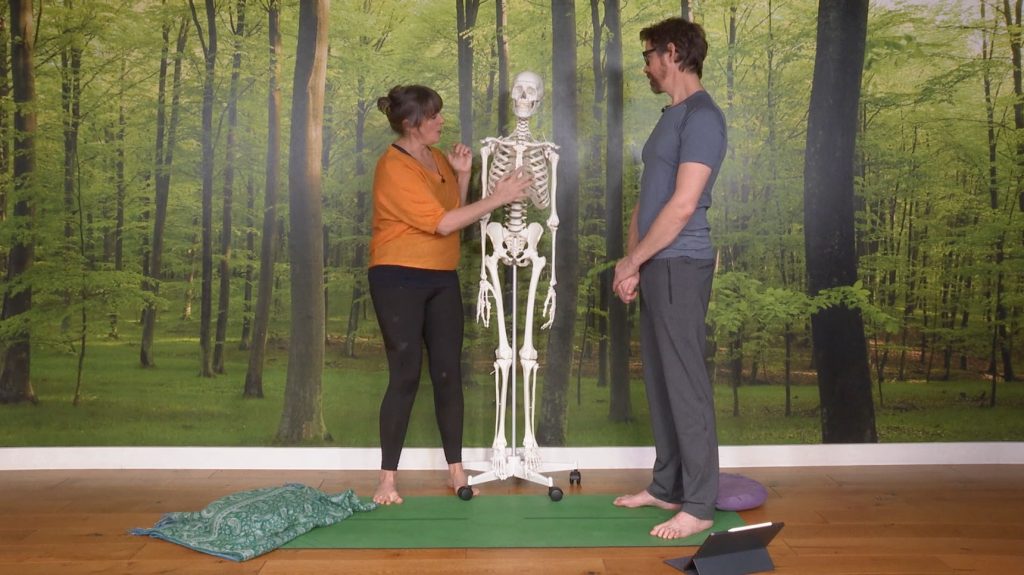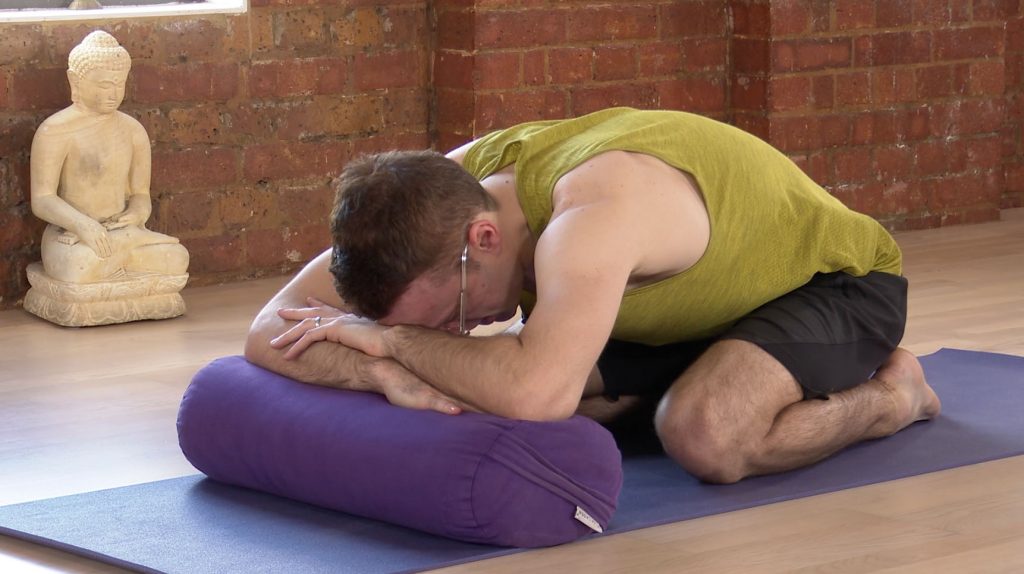
If you’re feeling anxious, some yoga poses may ramp up your feeling of jitteriness, whilst other poses can help you to feel more grounded. So which poses should you avoid if you are doing yoga for anxiety?
Everybody and every experience of anxiety is different. It is possible to have an anxious mind which can’t settle and a sluggish body. Or it may be that that your mind feels sluggish but your body is jittery. So, check in with yourself and use your self-enquiry to inform your own yoga practice. We suggest 4 yoga poses that can generally exacerbate feelings of anxiety. If that is the case we have offered suggestions for alternatives.
Wheel or Upward Bow
Full wheel or upward bow, urdhva dhanurasana in sanskrit can leave us feeling anxious and vulnerable. This backbend stretches out and exposes our front bodies. Whilst chest openers such as this are strengthening and energising, they are not always the most skilful choice if you are feeling anxious. But how about replacing wheel or upward bow with dhanurasana or bow? In this pose the head remains over the chest and the the pubic bone remains on the earth. In this alternate pose, you benefit from the stretch across the front of the body and strengthening in the back body much as you would in a full wheel.
Handstand
Handstand or Adho Mukha Vrksasana in Sanskrit is a wonderfully strengthening and uplifting pose but it can exacerbate feelings of anxiety in some people. Getting into handstand can seem an impossible endeavour and kicking up can increase anxiety. If this is the case for you, then why not try a variation of upward salute or Urdhva Hastasana? Rather than joining your hands in a prayer, turn your fingertips back so you’re making the same shape as a handstand but you are on your feet. Both these poses fight fatigue and give you an energy boost. They also help to strengthen your arms, shoulders and back and can counteract the effect of sitting too long at a computer. In addition to this, urdhva hastasana can also relieve mild anxiety.
If you like the feeling of mild inversions and the benefits of having your feet face the sky, why not try legs up the wall (viparita karani) instead of handstand. This gentle inversion is calming and can relieve mild backache whilst gently stretching the front body, back legs and the back of the neck. Some people find that it can calm mild anxiety.
Read more about yoga for stress and anxiety in this complete guide
Forearm Balance
Pincha Mayurasana or forearm balance is challenging for both mind and body. An inversion and a backbend that requires strength, this pose can be particularly challenging if you are feeling anxious. It’s sanskrit name literally translates as feathered peacock pose. Embodying a peacock is perhaps the last thing we feel like when we are anxious. You can gain many of its benefits from practicing extended puppy pose which is a cross between a downward dog and a child’s pose. The benefits of this pose include lengthening the spine and calming the mind.
Meditation with eyes closed
Closing your eyes for meditation can exacerbate anxiety. It can also be hard to find the focus necessary to meditate with a racing mind. A breathing practice or pranayama can provide an anchor for a racing mind and help soothe anxiety. A gentle Ujayii breath during your practice can be a helpful focus. Or try Kapalabhathi or alternate nostril breathing or nadi shodhana. An understanding of the anatomy of breathing can be helpful with yoga for anxiety. You can find out more in this class:

Yoga for Anxiety
Why not try this class specifically created to support you if you are feeling anxious and help you ground.

Read more in Yoga for Stress and Anxiety: A Complete Guide





thank you for this! I suffer from anxiety and find it especially challenging this poses and the closed eyes meditation. It is good to understand it !
So glad to hear that this blog was helpful for you. It’s good to know how to adapt things to make them easier for you in your practice.